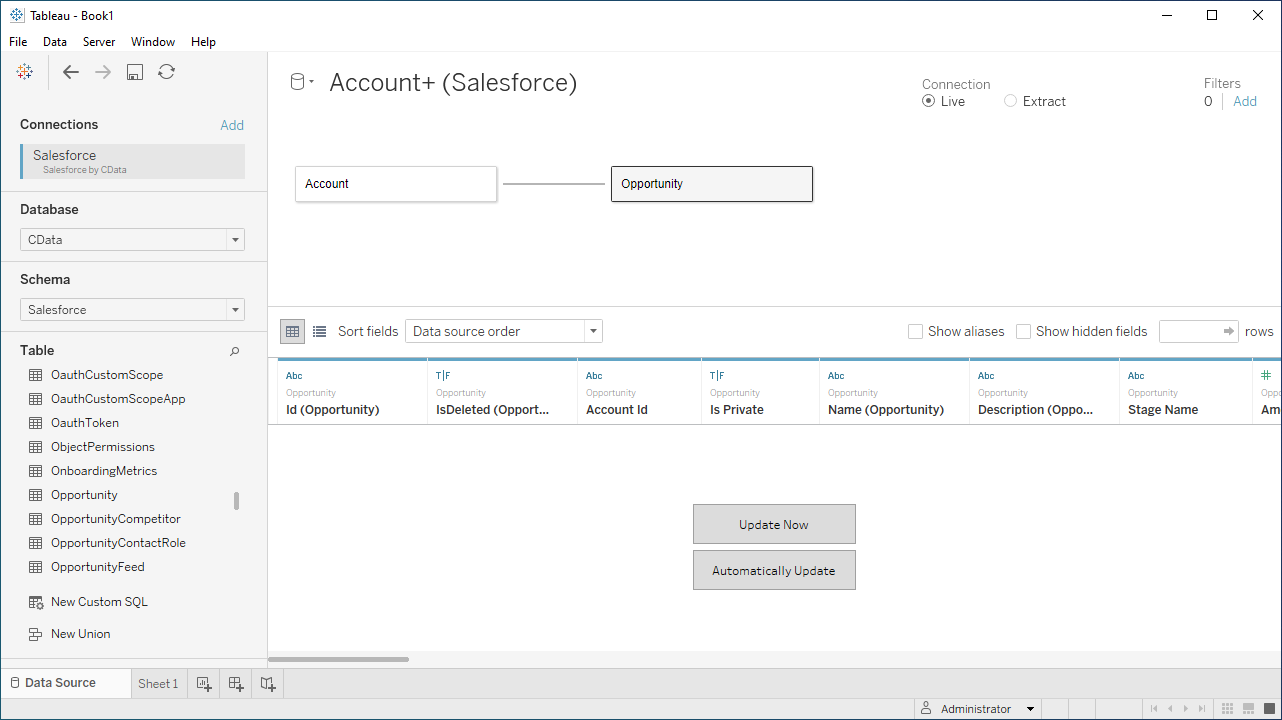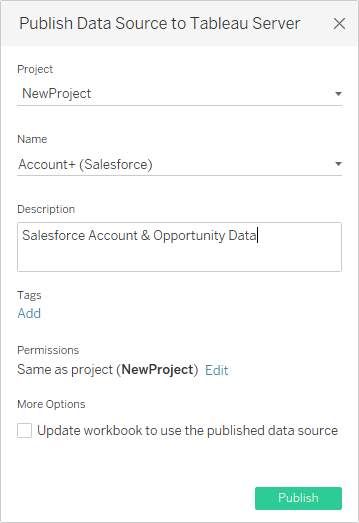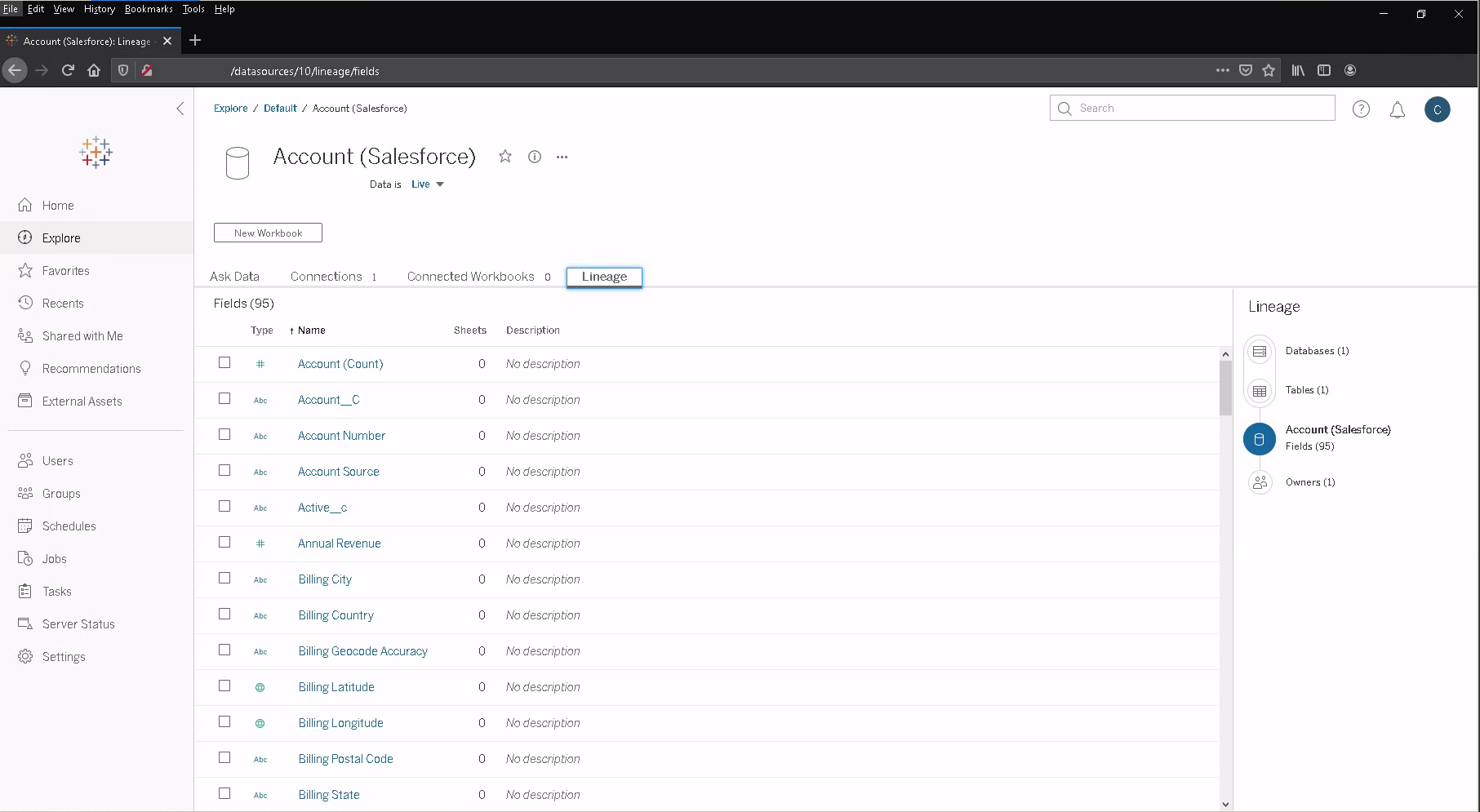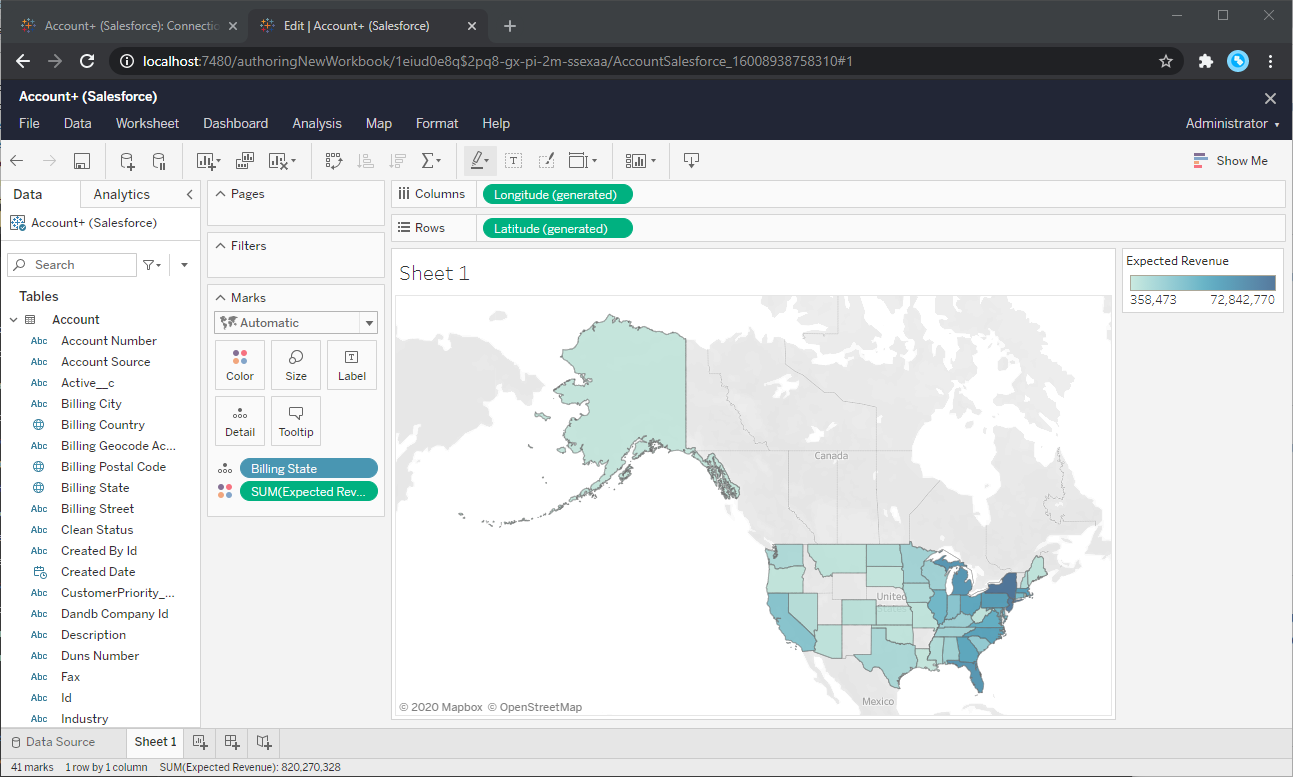Discover how a bimodal integration strategy can address the major data management challenges facing your organization today.
Get the Report →Publish Paylocity-Connected Dashboards in Tableau Server
Use CData JDBC drivers and Tableau Server to visualize live Paylocity data.
Tableau Server is a visual analytics platform transforming the way businesses use data to solve problems. When paired with the CData JDBC Driver for Paylocity, you get access to live Paylocity data within Tableau Server. This article shows how to connect to Paylocity in Tableau Desktop, publish a Data Source to Tableau Server, and build a simple chart from that data.
The CData JDBC Driver enables high-speed access to live Paylocity data in Tableau Server. Once you install the driver, you simply authenticate with Paylocity and you can immediately start building responsive, dynamic visualizations and dashboards. By surfacing Paylocity data using native Tableau data types and handling complex filters, aggregations, & other operations automatically, CData JDBC Driver grants seamless access to Paylocity data.
Enable Connectivity to Paylocity in Tableau Server
Start by installing the CData JDBC Driver on the machine hosting Tableau Server.
If your server is a Linux Machine:
- Copy cdata.jdbc.paylocity.jar and cdata.tableau.paylocity.lic.
- Place the copies in the Tableau Server Connectors folder (/opt/tableau/tableau_driver/jdbc).
- Restart Tableau Server.
If your server is a Windows Machine:
- Copy cdata.jdbc.paylocity.jar and cdata.tableau.paylocity.lic.
- Place the copy in the Tableau Server drivers directory (C:\ Program Files\Tableau\Drivers).
- Restart Tableau Server.
Next, install the CData JDBC Driver on the machine running Tableau Desktop. Before starting Tableau on Windows, make sure that you have placed the .jar file in the C:\Program Files\Tableau\Drivers folder. Before starting Tableau on macOS, make sure that you have placed the .jar file in the ~/Library/Tableau/Drivers folder.
Connect to Paylocity in Tableau Desktop
Once the driver is installed on the Server machine, we can configure a connection to Paylocity in Tableau Desktop and publish a Paylocity-based Data Source to Tableau Server.
- Open Tableau Desktop.
- Click More under Connect -> To a Server.
- Select "Other Databases (JDBC)".
- Configure the connection to the data. The driver comes with a connection string builder that streamlines creating and managing the content of connection strings. Note that you will need to manually add "jdbc:paylocity" to the beginning of the connection string.
- Click "Sign In".
Set the following to establish a connection to Paylocity:
- RSAPublicKey: Set this to the RSA Key associated with your Paylocity, if the RSA Encryption is enabled in the Paylocity account.
This property is required for executing Insert and Update statements, and it is not required if the feature is disabled.
- UseSandbox: Set to true if you are using sandbox account.
- CustomFieldsCategory: Set this to the Customfields category. This is required when IncludeCustomFields is set to true. The default value for this property is PayrollAndHR.
- Key: The AES symmetric key(base 64 encoded) encrypted with the Paylocity Public Key. It is the key used to encrypt the content.
Paylocity will decrypt the AES key using RSA decryption.
It is an optional property if the IV value not provided, The driver will generate a key internally. - IV: The AES IV (base 64 encoded) used when encrypting the content. It is an optional property if the Key value not provided, The driver will generate an IV internally.
Connect Using OAuth Authentication
You must use OAuth to authenticate with Paylocity. OAuth requires the authenticating user to interact with Paylocity using the browser. For more information, refer to the OAuth section in the Help documentation.
The Pay Entry API
The Pay Entry API is completely separate from the rest of the Paylocity API. It uses a separate Client ID and Secret, and must be explicitly requested from Paylocity for access to be granted for an account. The Pay Entry API allows you to automatically submit payroll information for individual employees, and little else. Due to the extremely limited nature of what is offered by the Pay Entry API, we have elected not to give it a separate schema, but it may be enabled via the UsePayEntryAPI connection property.
Please be aware that when setting UsePayEntryAPI to true, you may only use the CreatePayEntryImportBatch & MergePayEntryImportBatchgtable stored procedures, the InputTimeEntry table, and the OAuth stored procedures. Attempts to use other features of the product will result in an error. You must also store your OAuthAccessToken separately, which often means setting a different OAuthSettingsLocation when using this connection property.
Discover Schemas and Query Data
Once you establish the connection to Paylocity data, you can configure which entities to visualize.
- Select CData from the Database pull-down menu.
- Select Paylocity from the Schema pull-down menu.
- Drag the tables and views you wish to visualize onto the join area. You can include multiple tables.
![Selecting table(s)]()
- Select Update Now or Automatically Update. Update Now lets you preview the first 10,000 rows of the data source (or enter the number of rows you want to see in the Rows text box). Automatically Update auto-loads the changes in the preview area.
Publish Data to Tableau Server
After you configure the data you wish to visualize, you can publish the Data Source to a Tableau Server instance. In Tableau Desktop:
- Click Server -> Sign In.
- Enter the URL for your Tableau Server.
- Authenticate with Tableau Server credentials.
- Click Server -> Publish Data Source and select your data source.
- Click Publish.
- Select the Project, name the Data Source, and optionally add a description.
- Click Publish.
![Publish the Data Source to Tableau Server]()
This creates a new entry under the server's data source list, from which you an change the data source's permissions, view its history, and perform other management tasks.
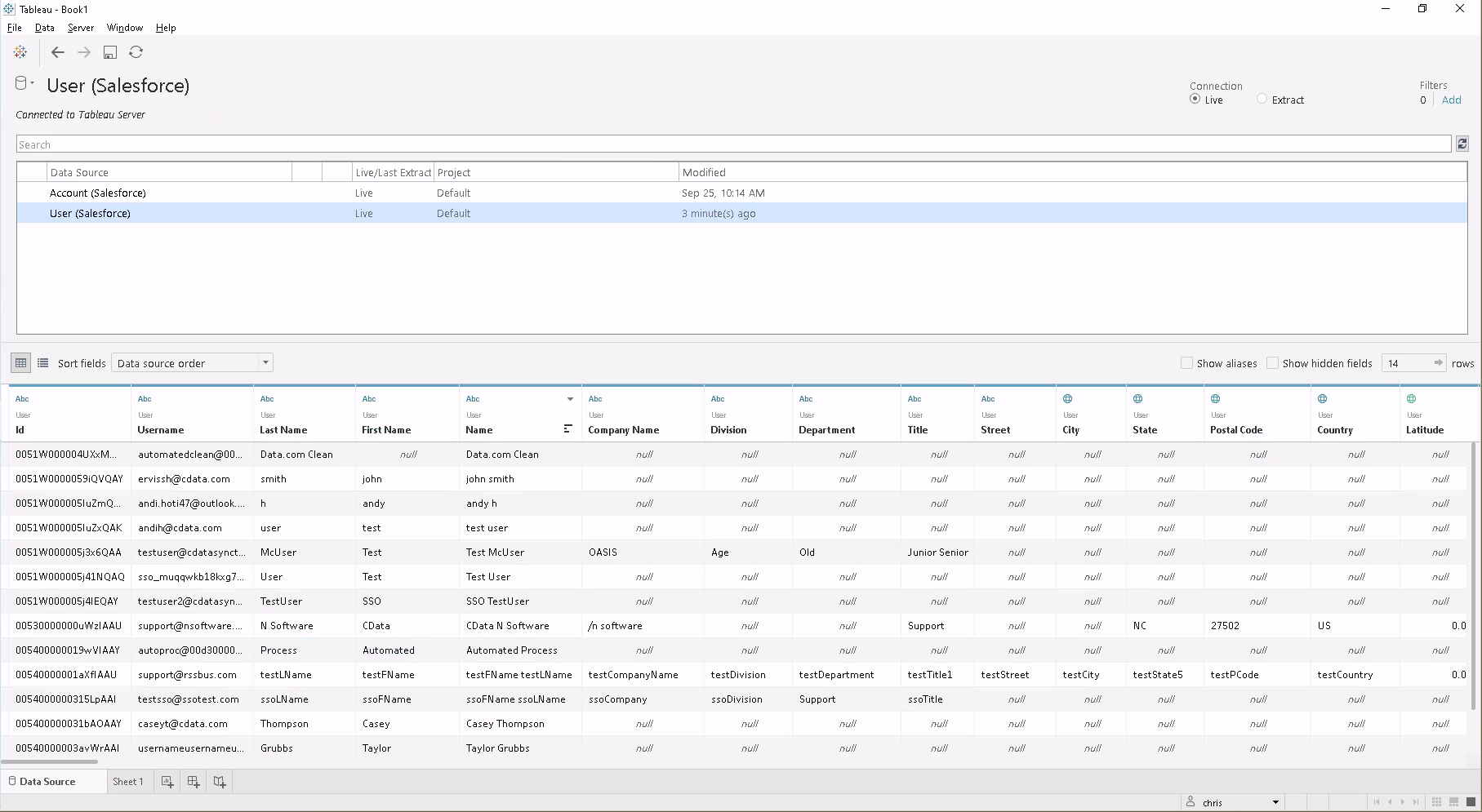
Note that workstation connected to the same server will be able to use the same source in Tableau Desktop, even if the driver isn't installed there. Also, workbooks created directly on Tableau Server (via the web interface) can use this source.
Visualize Paylocity Data in Tableau Server
With the Data Source published to Tableau Server, you are ready to visualize Paylocity data.
- Login to your Tableau Server instance.
- Connect to the remote source using the Search for Data -> Tableau Server in the Connect sidebar.
![Remote Data Source]()
- Click the published Data Source.
- Click New Workbook.
- In the workbook, Paylocity fields are listed as Dimensions and Measures, depending on the data type. The CData JDBC Driver discovers data types automatically, allowing you to leverage the powerful data processing and visualization features of Tableau.
- Drag a field from the Dimensions or Measures area to Rows or Columns. Tableau creates column or row headers.
- Select one of the chart types from the Show Me tab. Tableau displays the chart type that you selected.
![Visualizing live Paylocity data in Tableau Server]()
Using the CData JDBC Driver for Paylocity with Tableau Server, you can easily create robust visualizations and reports on Paylocity data. Download a free, 30-day trial and get started today.






